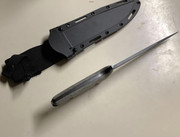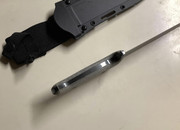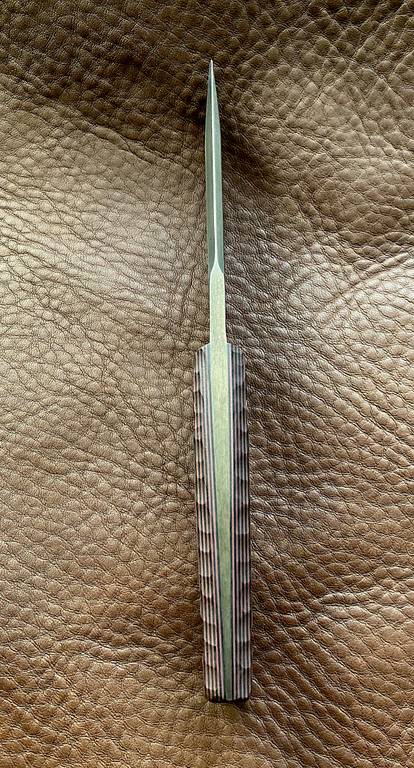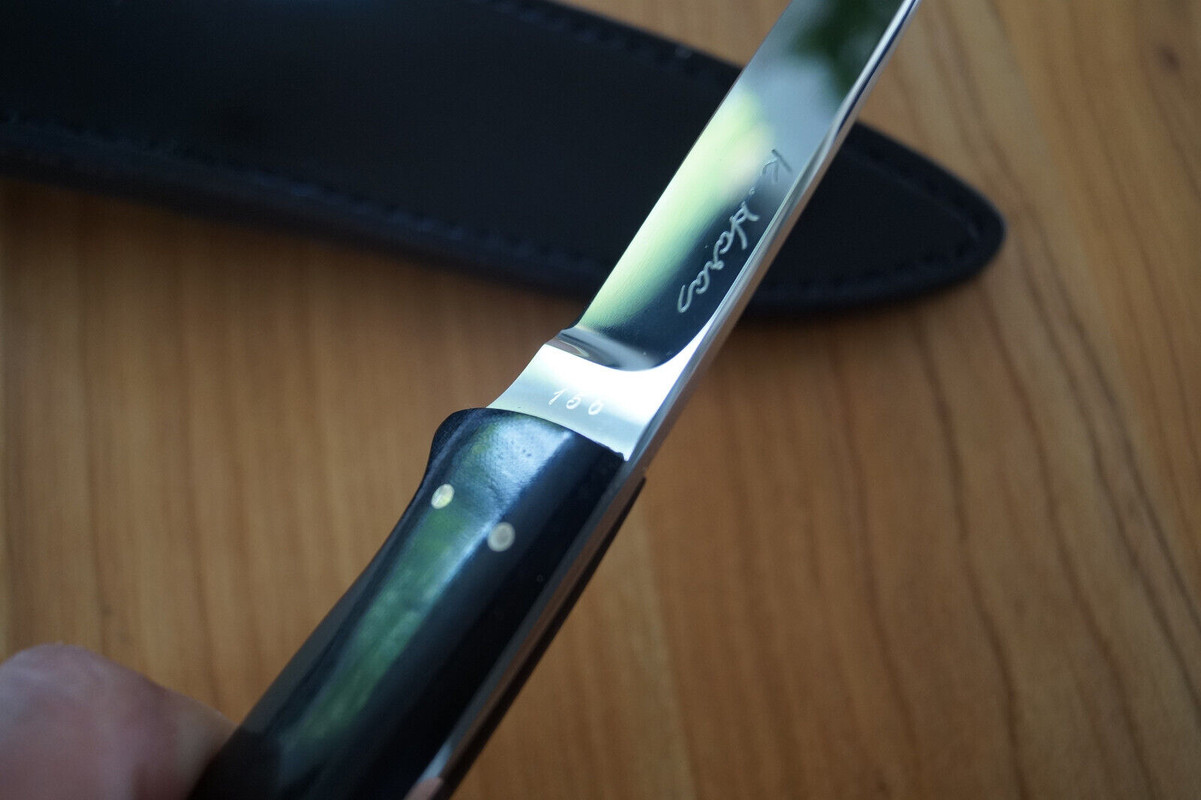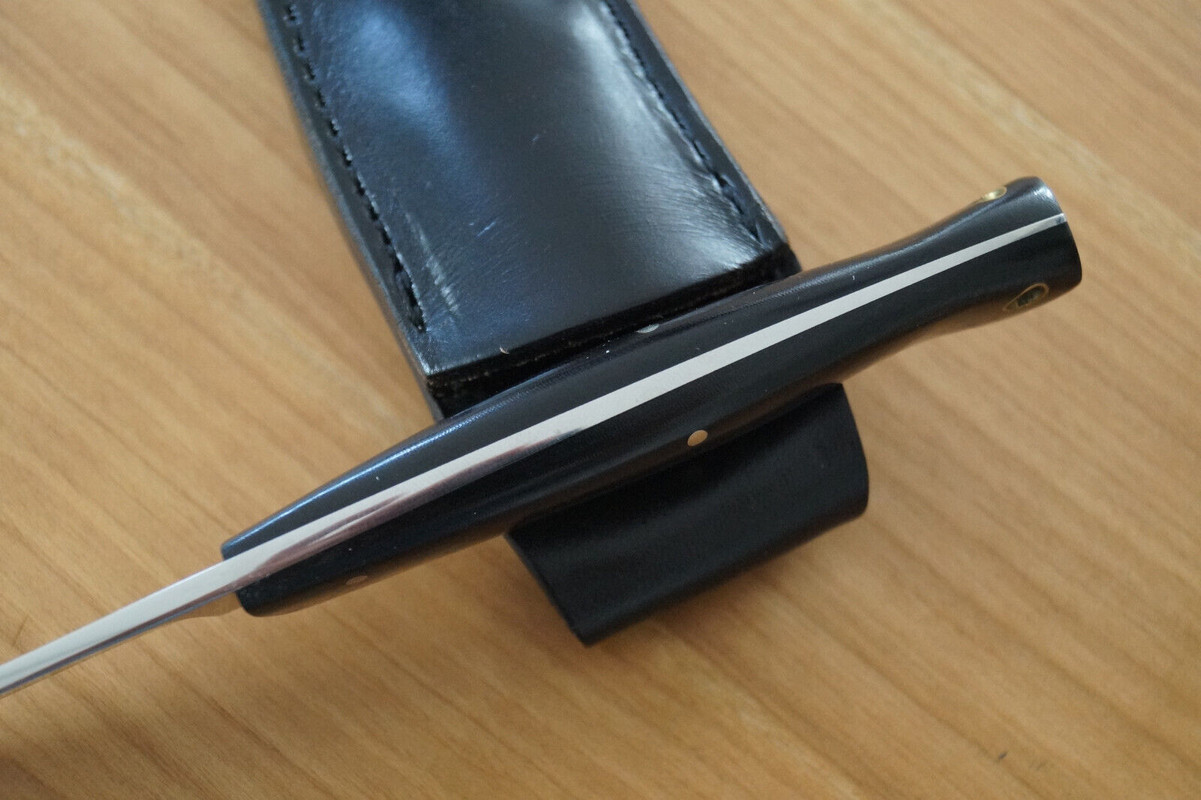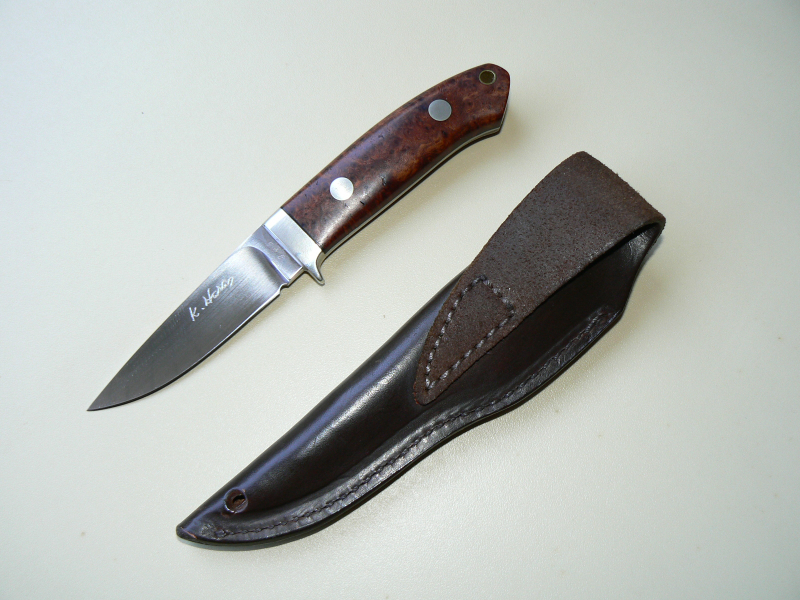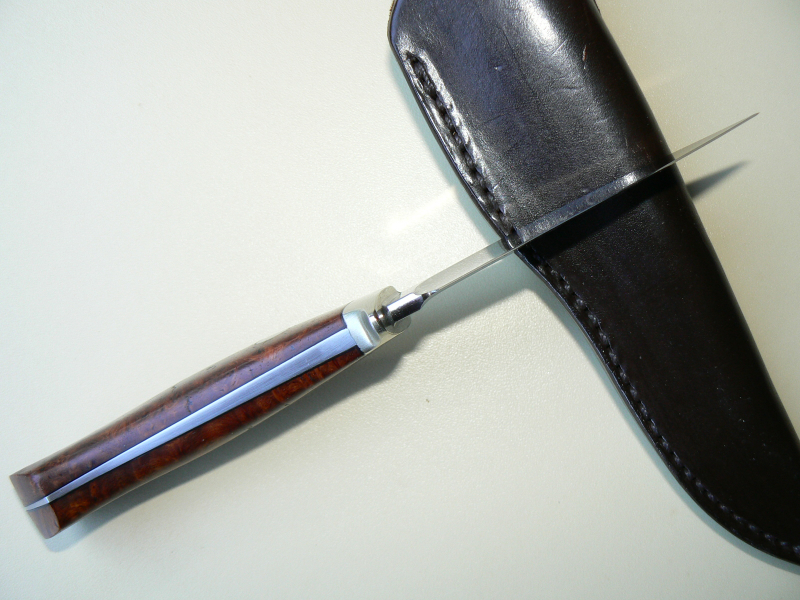From a durability standpoint a tapered tang is superior to an untapered drilled out tang both when loaded vertically (chopping) and when loaded horizontally (prying). The sudden edges of the circular holes create pretty major stress risers in both of these applications.
A big improvement you could make would be to countersink these holes- it would help reduce these stress raisers while also reducing weight. This is readily possible with the same tools used to drill the holes in the first place and the fact that it isn't done more often perhaps suggests that there is a time saving element here rather than a high commitment to optimisation.
The next level would be to CNC a shape other than a circle- looking for something more space filling, (to minimise weight) while also more webbed. Here's an example of a similar kind of output achieved through generative design. This kind of tool isn't necessary though.
This kind of weird webby drilled tang isn't seen often because (as stated earlier by
 ferider
ferider
) once you have a CNC you can do smarter and more effective things to reduce weight while maximising strength as with the busse shown above. The design of that light brigade (?) will far outperform a traditonally skeletonised blade in terms of durability/lightweight balance but without incorporating taper it is actually not as optimised as it could be.
Modern western consumers love super thick full tangs and it's actually a very emotionally charged design feature. It almost signals to the world "this is a real knife. I do real work". This is I think a bit of a shame as often it leaves knife users with a tang that is so much thicker than is needed. To further this point- An undrilled and tapered full tang is actually stronger than an undrilled UNtapered full tang. When you are prying or chopping with a blade so much of this stress is focused on the transition between handle and blade. A tapered tang allows for flex and stress to be shared more evenly along the tang rather than just being concentrated in this area (or at a nearby stress raiser like a finger choil or pin hole). Think of how a filleting blade bends so elegantly along its full length due to its taper. A filleting blade at full stock thickness would likely bend or snap at the handle under the same loads as the stress would be focused in one point.
In thinner stock sensibly strong skeletonisation can match sensibly strong tapering in terms of overall weight reduction. However as stock becomes thicker the benefits of tapering pull ahead dramatically and leave skeletonisation having do to some pretty silly things and leave some biiiig sketchy holes in order to match.
Another benefit of tapering is that it can be easily paired with fullering on the tang to trim further weight in a very strong and safe manner. Think of it as a less optimised and home smith accessible version of the previously posted busse. Hatcher knives has some great examples of tapered and fullered tangs on his instagram. We have always aggressively tapered tangs but we've recently been making some khukuri that are tapered (heavily) fullered (moderately) and drilled (lightly). As you might expect these are quite light and we expect them to continue our streak of zero full tang failures.
As
 Hammer67
Hammer67
stated though you do not always necessarily want a lighter tang. For blades that do not need to chop (particularly those that are used for carving) a heavier handle can help bring the POB back and increase control. The added handle weight can also help these blades to chop from the shoulder even if it negatively impacts wrist driven chopping. For some swords a heavy tang is a good way of bringing the POB back, giving a touch more point control without hurting chopping power too much or adding rotational intertia eg yataghan, khyber knife, messer and other mostly choppy but a little stabby swords.
This next point is a bit of a funky one. All knife blades are to some degree stronger when they are given some degree of distal taper for the same reasons as described with the filleting knife above. It does not necessarily matter a great deal but if we have an unlimited budget and we're optimising knives for performance and durability then they should have some taper. In a world where this is happening it becomes less necessary to have thicker tangs on carving and utility blades to tame the POB. In this world there is also another benefit that is not often talked about in the world of knives, but is very common in swords. Imagine that your knife is a broom handle. The POB is perfectly in the middle. If you taper towards both ends then the POB remains the same but the broom is easier to spin or stop moving because it has lower rotational inertia. If you reverse taper the broom and add material to the ends it retains the same POB but is now much harder to spin or stop moving. With swords this is very notable in hand but it is also present in every knife. You'll sometimes run into this in high end chefs knives that have strong dual distal taper paired with a beefy bolster. This concentrates weight at the finger and manipulates the POB but it also keeps the blade feeling super light and easy to deftly control in hand. If regular carving focused utility knives (which do not even need to chop) were to be built more like this there would be some nice benefits.
Anyway this has been a lot of text, however I spend a large portion of my day thinking about blade dynamics and particularly tang constructions and handle weight as to me they're very critical to khukuri performance.
Take care,
Andrew and the team at Kailash

